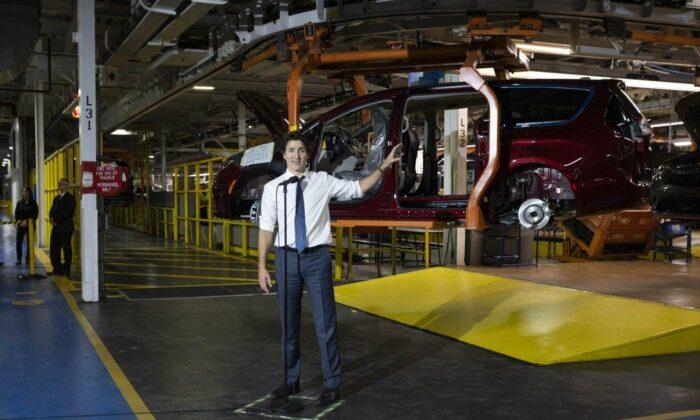The two companies stopped construction on the plant earlier this year as more government money was sought to match what the United States would offer under its new Inflation Reduction Act.
The two companies said in a statement they will immediately resume building the plant, known as NextStar Energy.
“We are pleased that the federal government with the support of the provincial government came back and met their commitment of levelling the playing field with the IRA,” Mark Stewart, Stellantis’s chief operating officer in North America, said in a statement.
He said the timeframe for that figure is roughly over 10 years, and it will be dependent on start dates and the level of production they achieve. Ontario has committed to fund one-third of the costs.
“It’s quite a good deal for the workers in the industry,” said Fedeli.
The federal government called the deal “good for workers and good for Canada.”
“It will create and secure thousands of jobs—both in the auto sector and in related industries across Canada—and will further solidify Canada’s place as a leader in the global electric vehicle supply chain,” Deputy Prime Minister Chrystia Freeland and Industry Minister François-Philippe Champagne said in a statement.
“The companies only assemble batteries, they don’t make the components, so all these components need to be made here in Ontario now: cathode, anode, separator, copper foil, electrolytes, lithium hydroxide - each of those six major components will be a $1-billion-dollar-plus company coming to Ontario.”
The $5-billion plant was first announced in the spring of 2022, and Ottawa and Ontario were going to contribute $500 million each towards construction costs. It’s expected to create 2,500 jobs.
“It’s a good day not only for our joint venture but also for Canada,” Dong-Myung Kim, president of the Advanced Automotive Battery Division of LG Energy Solution, said in a statement. ”We are happy to finally move forward with building the country’s first major battery plant and be a central part of the local battery ecosystem.”
The companies said production is set to launch next year with an annual production capacity in excess of 45 gigawatt hours.
Payne told The Canadian Press she was “ecstatic” about the deal.
She said there was “no way” Unifor was going to lose the thousands of jobs that will come directly and indirectly from the plant.
“Unifor and the workers were not prepared to let anyone—not the company and not the governments—take away the jobs and the futures we were promised.”
Payne said Stellantis’s move to stop construction and talk of moving the plant elsewhere was not an idle threat. It wasn’t just the Windsor plant that was at risk, but also Stellantis’s plant in Brampton, Ont., too.
“There were thousands and thousands of jobs and workers’ lives basically hanging in the balance here,” she said. “There was a serious risk here.
Windsor Mayor Drew Dilkens said he was relieved.
“The last seven weeks has certainly been a rollercoaster ride for people in the community as we’ve waited for news on whether this deal could be secured,” he told The Canadian Press.
“If this did not happen, it would certainly have had a very negative impact on the future of our region,” Dilkens said.





